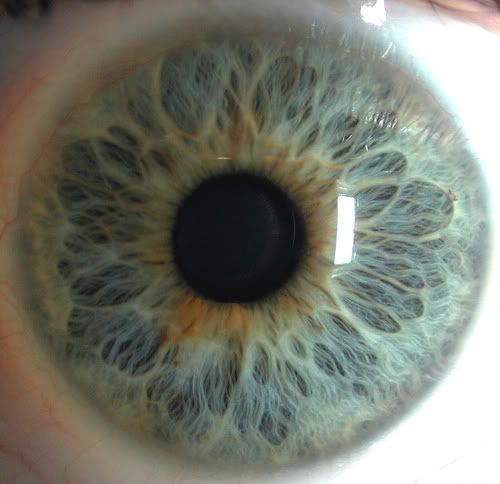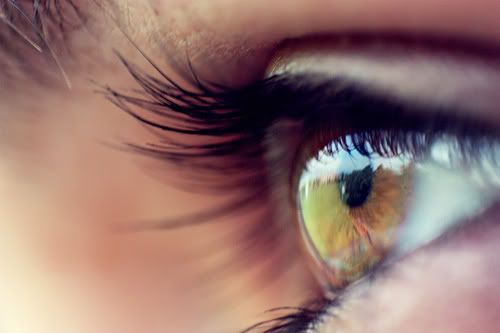Το μάτι, σαν όργανο. – Eye, as an appliance
Το μάτι, σαν αισθητήριο όργανο

Το μάτι είναι ένα θαύμα βιολογικής προσαρμογής σε μια συγκεκριμένη λειτουργία. Για την πλήρη και επιτυχέστερη λειτουργία του, το μάτι χωρίζεται δομικά σε τέσσερα λειτουργικά τμήματα:
Στον αμφιβληστροειδή.
Στα φωτοσυλλεκτικά κύτταρα.
Στα μόρια των φωτοχρωστικών ουσιών.
Η λειτουργία του ματιού είναι παρόμοια με αυτήν μιας φωτογραφικής μηχανής. Έχει διάφραγμα (ίρις) που ανοιγοκλείνει ελέγχοντας την είσοδο του φωτός στην οπή του ματιού (κόρη). Διαθέτει φακό για την εστίασή της εικόνας πάνω σε μια φωτοευαίσθητη επιφάνεια στο σκοτεινό εσωτερικό του, με τον ίδιο τρόπο που ο φακός της φωτογραφικής μηχανής εστιάζει την εικόνα πάνω στο φιλμ.
Αυτό το φυσικό φιλμ του οφθαλμού είναι ο ευαίσθητος αμφιβληστροειδής χιτών, μια επίστρωση νευρικών ιστών που καλύπτει το μεγαλύτερο μέρος της εσωτερικής επιφάνειας του ματιού.
Ο αμφιβληστροειδής είναι κάτι πολύ περισσότερο από ένα φωτογραφικό φιλμ. Στην πραγματικότητα πρόκειται για ένα απίστευτα συμπαγή και ισχυρό υπολογιστή αποτελούμενο από ένα πυκνό δίκτυο περίπου 200 εκατομμυρίων εξειδικευμένων νευρικών κυττάρων.
Περίπου τα μισά από τα νευρικά αυτά κύτταρα είναι οι φωτοσυλλέκτες (ραβδία και κωνία) που συλλαμβάνουν τις εισερχόμενες φωτεινές πληροφορίες.
[Στον αμφιβληστροειδή υπάρχει επίσης και ένα δίκτυο πολύ λεπτών αιμοφόρων αγγείων που τον αιματώνουν συνεχώς. Στο δίκτυο αυτό οφείλεται το κόκκινο χρώμα των ματιών, που φαίνεται στις φωτογραφίες με φλας, όταν κανείς κοιτά προς την φωτογραφική μηχανή την ώρα της φωτογράφισης.]

Τέλος, στα νευρικά κύτταρα υπάρχουν οι φωτοχρωστικές ουσίες, με την χημική διάσπαση των οποίων επιτυγχάνεται η αντίληψη του φωτός και των χρωμάτων. Αυτές καλούνται οψίνες (ροδοψίνη, ιωδοψίνη, μελανοψίνη).
Αυτά, χωρίς να υπεισέλθουμε σε λεπτομέρειες, με λίγα λόγια, είναι τα βασικά απαραίτητα εφόδια του ματιού για να εκτελέσει τη λειτουργία της όρασης.
Τελικά, μήπως πρόκειται για ένα φυσικό τεχνολογικό θαύμα;
Translation into English
Eye, like a sensory organ
The eye is a marvel of biological adaptation to a particular function. For the full and successful operation, eye is divided into four levels of structure:
The visual (optical) eye.
The Retina.
The photoreceptor cells.
The photopigment molecules.
The function of the eye is similar to a camera. It has an aperture (iris) that opens and closes controlling the light entering in the hole of the eye (pupil). It has a lens to focus the image onto a photosensitive surface in a dark interior in the same way that the lens of a camera focuses the image on the film.
This natural film of the eye is the sensitive retina, a layer of nerve tissue that covers most of the inner surface of the eye.
The retina is much more than a photographic film. In fact this is an incredibly compact and powerful computer consisting of a dense network of about 200 million specialized nerve cells.
About half of these nerve cells are photoreceptors (rods and cones) that capture the incoming light information.
[There is also a very fine network of blood vessels that supplies blood to the retina. That vessel network is the cause of the eye redness that appears in flash photos, when one looks to the camera at the time of photography.]
Finally, in the nerve cells there are the photopigment substances. By their chemical division perception of light and colors is achieved. These are called opsins (rodopsin, iodopsin, melanopsin).
All these, without going into details, are in short the basic supplies needed for the eye to perform the function of vision.
Ultimately, isn’t this is a natural technological marvel?
admin is | Topic: λειτουργίες όρασης χρωμάτων | Tags: αμφιβληστροειδής, κόκκινο, κύτταρα, κωνία, μάτι, οπτική, όραση, οψίνες, ραβδία, φιλμ, φωτογραφία



2 Comments, Comment or Ping
Nick Chalas
Well done Pano,
An interesting description of the basic components and their respective function in the human eye. My understanding is that the literature on the “eye as a sensory organ” draws parallels to the operation of the old fashion conventional camera. Just as a thought, my question is: how does the modern digital system relate to the structure and sensory function of the eye?
10-11-2017
admin
Dear Nick, just wait a bit and probably we’ll find out the relation between the sensory function of the eye and the modern digital system cameras soon as we’ll talk about conia, the color receptors in the eye
Panos
11-11-2017
Reply to “Το μάτι, σαν όργανο. – Eye, as an appliance”